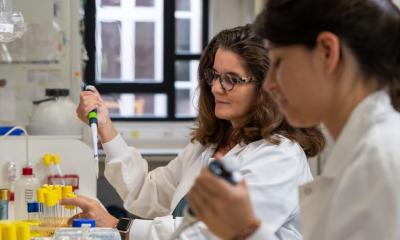Near-patient testing (NPT)
Near-patient testing (NPT) is any analytical process performed for, or by, a patient outside the traditional clinical laboratory.
By Manole Cojocaru MD PhD, scientific consultant at ROMAR Medical-Laboratory Colentina, Bucharest
NPT benefits: reduction of total costs, improved patient care with better quality of life. NPT speeds up diagnosis, so treatment decisions can be made much more quickly and the patient can be managed more effectively. The operational advantage is also clear: NPT gives faster results and thus reduces length of stay.
Analytical systems, when used properly, provide clinically acceptable measurements. However, it is widely recognised that procedural errors generate inaccurate data that can be clinically misleading. Therefore, quality assurance is crucial. The chronological link between test results, quality control results and instrument status must be retained. The service is to be carried out within recommended national quality assurance schemes.
NPT training: For NPT to realise its potential economic and clinical benefits it must be monitored and supervised by qualified staff from the clinical laboratory and it has to be performed within the framework of a clearly defined policy. An approach that may be varied with local circumstances is to be preferred.
The success of NPT depends on the effectiveness of the training of non-laboratory staff. Training ensures:
• knowledge of pre-analytical factors, including obtaining the correct specimen, the importance of clinical contradiction, sample handling, and stability of sample and reagents
• demonstrable expertise in analytical skills, including operation, calibration and routine maintenance, together with an understanding of any analytical limitations of the instrument; a recognition of instrument malfunction and simple troubleshooting techniques; principles and procedures of internal quality control and external quality assessment; cleaning and decontamination procedures
• knowledge of post-analytical factors, including accurate documentation of patient data; basic knowledge of the importance of abnormal results.
NPT applications: NPT is used in the home, health centres, emergency rooms, out-patient clinics and hospitals. It is particularly valuable with regard to diabetes mellitus and gestational diabetes. The key in diabetes is to maintain normoglycaemia, which needs regular monitoring and access to a mobile and rapid testing device. NPT is used in hospital for clinical crises, e.g. hyperglycaemia, hypoglycaemia, in all of which treatment must be given quickly. Patients suffering from type 1 diabetes should follow the intensive treatment scheme, including very frequent self-testing of blood sugar. There is also now evidence that provision of the HbA1c result at the time of consultation can improve glycaemic control.
A good example of NPT use is in ruling out urinary tract infections. It is common practice for general practitioners to send urine samples to the laboratory and start antibiotics before the diagnosis of an infection is made. However, 80% of samples sent to laboratories are not infected. A stick test for bacterial metabolites in the urine reduces the number of unnecessary samples sent to the laboratory, and avoids unnecessary antibiotic use and hospital referrals.
Helicobacter pylori testing is yet another example of the benefits of NPT. There are good data to show that using NPT to detect H. pylori antibody reduces endoscopy requirement, changes therapy, decisions and reduces clinic visits.
The effectiveness of NPT is also documented for interpretative assessment of anticoagulation status. Monitoring patients for anticoagulation status during coronary bypass and minimising blood loss reduces the amount of blood product used: Close control of anticoagulation also reduces surgery time, time of chest tube drainage and ICU time, all of which save considerable costs.
NPT is also applicable with patients with acute chest pain, since it can determine if the patient has had a heart attack. Half of all coronary care beds contain people who have not had a heart attack - and they cost twice as much as other beds. Therefore, faced with a patient with chest pain, the general practitioner needs to know if this is a myocardial infarction and thus emergency admission is needed. Many ECGs do not give a clear answer regarding myocardial infarction.
Finally, patient expectations are increasing. They expect more from their general practitioner and from their hospital. An accurate diagnosis is a prerequisite for correct treatment. Correct treatment also leads to optimal spending and resource allocation in the healthcare system. Laboratory test results are one of the most important sources of objective medical data and thus vital to most diagnoses.
Positive/abnormal test results help determine or confirm a diagnosis. Negative/normal results help determine that the patient is well or that a certain diagnosis can be ruled out. This will not lead to further treatment, but it does not mean the testing itself was unnecessary!
NPT outlook
Four main drivers will strengthen the role of NPT:
• changes in clinical practice
• clinical need, in particular compliance with therapy
• limitations of the laboratory services
• direct patient demand.
NPT, which will increase dramatically over the next few years, will support optimisation and compliance with therapeutic interventions.
So the time is ripe for NPT. The next steps to be taken? Change the culture, change the practice and improve the outcomes.
01.03.2006











